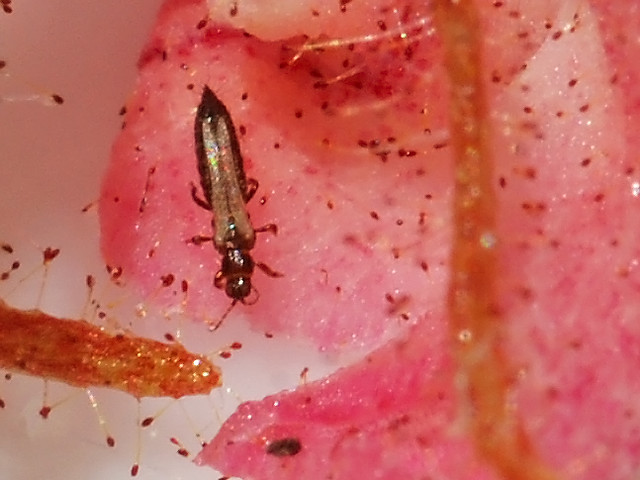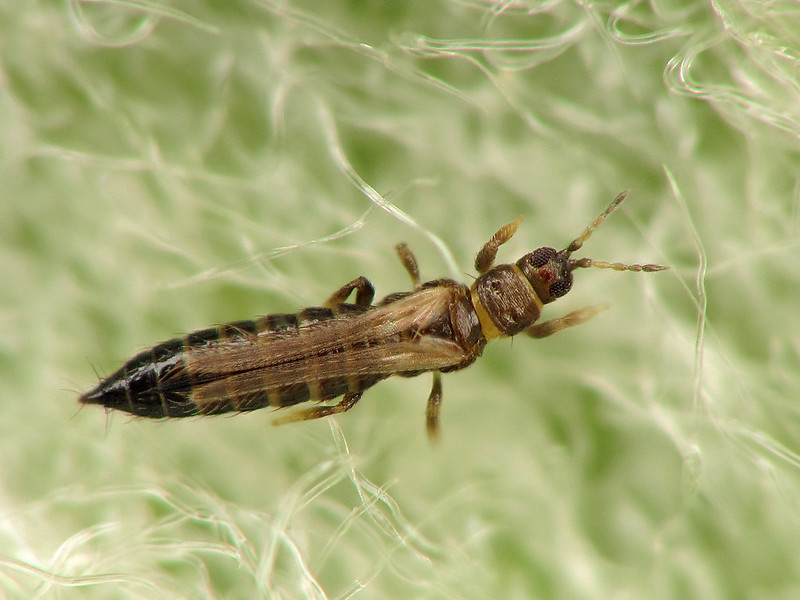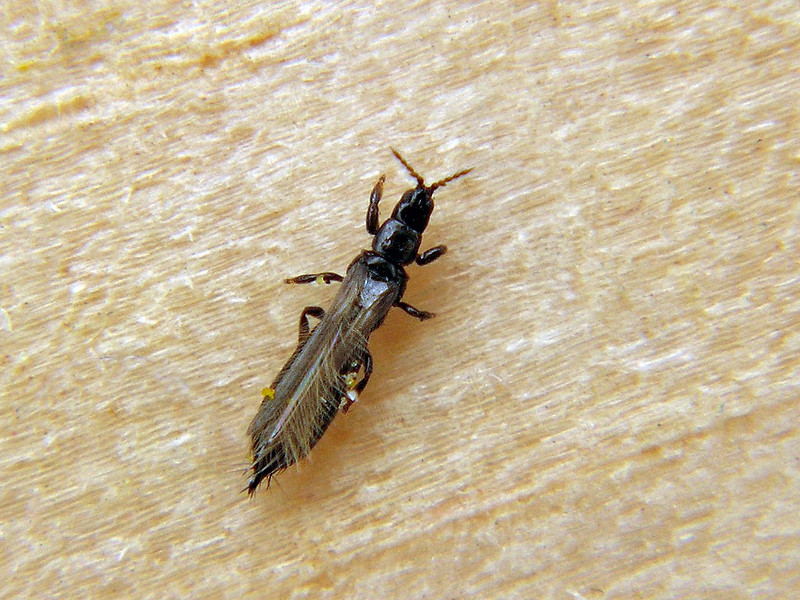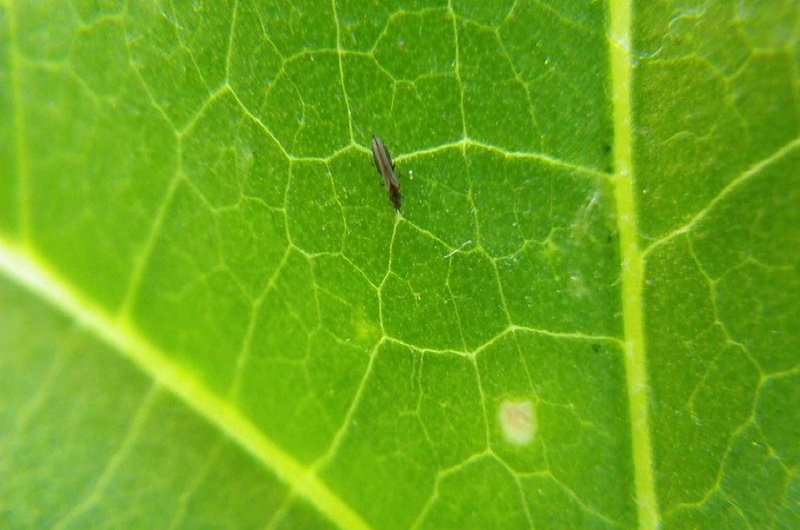Thrips — a name that emerged from the ancient Greek word for woodworm — are not a single insect species, but an entire and diverse group of species. Of the more than 7,000 different kinds of thrips that have been identified so far, only a small portion would be considered pests. Many of the remaining species feed on insect debris, fungi, or decaying leaves, something that poses no threat to agriculture. Some, like those that eat aphids, are even actively helpful.
Those thrips that are pests, however, pose a threat to a wide range of plants and flowers in two distinct ways. One of them is direct. As thrips feed on countless different plants, flowers, shrubs, and even trees, they leave noticeable damage behind. In addition, thrips can carry a variety of plant viruses, damaging the vegetation they feed on indirectly. The Tomato Spotted Wilt Virus is merely one example of the viruses thrips can transmit to plants. When a plant has been exposed to thrips, leaves may develop lighter or darker spots, shrivel up and become rounded or take on a bud-like appearance, and the plant may even become so weak that it dies.
Because there are so many different kinds of thrips, these insects can be hard to identify. In general, they are slender, their long bodies are shaped like a projectile, and they range in size from about half a millimeter to five millimeters. Some thrips have wings, while others do not. Those that do generally do not fly very well.
Nobody would welcome these pests in their garden, and there is no question that certain thrips are rather dangerous for your plants. Do thrips also pose a threat to human health, though? What should you do if you find thrips among your plants?
Do Thrips Bite?
Yes. Some of the many thrips species can and do, occasionally, bite people. Unlike dangerous pests such as mosquitoes or ticks, thrips do not, in fact, feed on human blood, nor do the many plant viruses thrips can carry pose a risk to humans.
One distinguishing feature of thrips is the fact that they are able to find sustenance in numerous different types of plants, rather than primarily depending on only one food source. When thrips bite humans with their characteristic asymmetrical mandibles, they are simply in search of food. Once they discover that you aren’t it, they will quickly move onto greener pastures.
Those who are bitten by thrips are unlikely to see the bite in action — rather, they’ll feel a painful sensation (thrips have sharp mouthpieces that can break skin), inspect the site, and fail to spot the bug that has already cleared out.
The bite may, however, leave a small red lesion that can even become a little inflamed and lead to a localized skin rash. Those who are allergic can expect a stronger reaction. In these cases, seeking medical attention is always advised; you likely won’t know what type of bug bite you, after all.
If you are trying to prevent thrips bites, wearing an insect repellent that contains DEET will do the job — and it will also protect you against more dangerous bug bites.
What Do I Do if I Find Thrips in My Plants?
Thrips can be hard to identify due to the fact that many are so tiny. Gently tapping the leaves of your plants while you hold a white piece of paper underneath can cause thrips to drop down, allowing you to get a closer look. At that point, you may be able to tell that you are dealing with thrips — but identifying the exact species is a challenge of its own. For this, you are best off reaching out to professionals.
Steps you can take to control thrips include:
- In greenhouses, close off potential points of entry, like small vents and cracks around door frames. Discard the plants you believe were damaged by thrips.
- Spread reflective mulch, which will help keep thrips populations down while also being effective against many other pests.
- For green pest control, inquire about introducing species like predatory thrips and parasitic wasps to your garden.
- Cover your plants with a mesh to prevent thrips from getting to them.
- Consider using an insecticide, including more natural solutions like pyrethrin, while being aware that some thrips have developed resistance to these.
- Call a pest control company and inquire about an integrated pest control plan. This difficult process, which will often include discarding infected plants that could otherwise spread viruses to other plants, will also ultimately be most successful.
Citations and Credits



